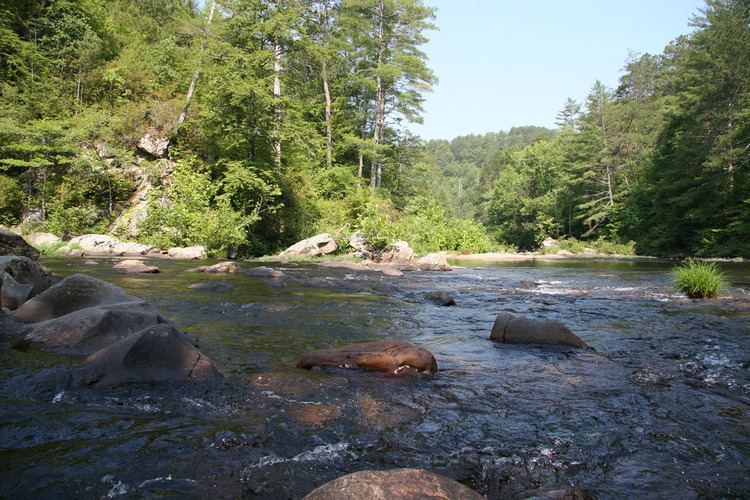Basin size 772 sq mi (2,000 km) Source elevation 732 m | Length 150 km Country United States of America | |
 | ||
Main source Cohutta Mountain~ 2,400 feet (730 m) River mouth Oostanaula River near Calhoun, GA~ 610 feet (190 m) | ||
The Conasauga River is a river that runs through southeast Tennessee and northwest Georgia. The Conasauga River is 93 miles (150 km) long and is home to 90 species of fish and 25 species of freshwater mussels. The Conasauga River watershed encompasses over 500,000 acres (2,000 km2) in two states, multiple counties, and two ecologically different regions.
Contents
- Map of Conasauga River United States
- LocationEdit
- Natural informationEdit
- Environmental problemsEdit
- Variant namesEdit
- References
Map of Conasauga River, United States
LocationEdit
The Conasauga River is the most westerly trout water on public land in Georgia. It is the only river in Tennessee that is not a part of the Mississippi River watershed.
The only road access to the Conasauga is found via Old GA 2, GA 2, and Carlton Petty Road. Access via foot trail is located on Forest Service road (FS) 64 in Betty Gap. Three other trails descend from the west off FS 17 to intersect the river trail. From south to north they are the Chestnut Lead, 2.0 miles (3.2 km), Tearbritches Trail, 4.0 miles (6.4 km), and Hickory Creek Trail, 3.0 miles (4.8 km). Primitive camping is allowed all along the river.
Natural informationEdit
At the core of the Conasauga watershed is the 35,268-acre (142.72 km2) Cohutta Wilderness, located in Fannin, Gilmer, and Murray counties in Georgia and Polk County in Tennessee. The United States Forest Service manages the area as part of the Chattahoochee National Forest and Cherokee National Forest. The preserve covers over 95,000 acres (380 km2) and contains approximately 15 miles (24 km) of the Conasauga.
The Conasauga River is home to more than 90 fish species, including 12 federally listed species of fish and mussels. Historically there were 42 species of freshwater mussels, however only 25 species still exist. It is estimated that only 1% of original population remains. The waters yield wild rainbow trout and wild browns, with rainbows up to 20 inches (510 mm) and browns to 9 pounds (4.1 kg). The managed land is populated by white-tailed deer, wild hogs, black bears, and smaller animals.
Environmental problemsEdit
The Conasauga River is a Category 1 priority watershed in Georgia’s Unified Watershed Assessment and 18 miles (29 km) of the river and 54 miles (87 km) of the tributaries have been on Georgia’s List of Impaired Waters for fecal, metal, toxic chemical, sediment, and nutrients.
Up to one-third of the summer flow taken in the vicinity of Dalton, Georgia is used for carpet production. The river has been contaminated with perfluorinated compounds used to make carpets stain-resistant.
Variant namesEdit
According to the Geographic Names Information System, Conasauga River has also been known historically as:
